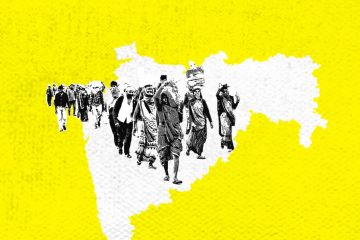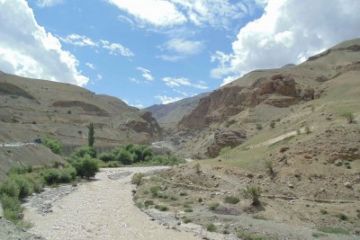
“I’ll call you,” he
said, as he turned his back to leave for Yarmouk refugee camp, almost certain
that they won't speak. That they can’t speak. Years of war have turned Syria
inside out, left the cell phone towers upside down. It’s a country of rubble
connected through weak, broken strands of mobile phone network that seldom
work.
She'll wait by the
telephone in the neighbouring town of Yalda, where armed fighters have agreed
upon a shaky reconciliation with the government of Bashar al-Assad.
An anxious lover, a
new mother, she knows the only place the phone will ring is on the rooftop that
has been transformed into a vegetable garden, a desperate attempt to forage
food in a time of great hunger and death. The rooftop is the sort of warm colourful
place that stands out like a painting in the cold eyes of a sniper, of whom
there are many. She won't go there. She can’t go there. She won’t tell him
that. The unspoken will go with him, as he lumbers past an armed rebel
checkpoint –where snipers frequently kill–into what UN Secretary General Ban
Ki-moon has called “the deepest circle of hell.”
This is Yarmouk today:
a Palestinian refugee camp in Damascus that has been under siege for almost
three years, deprived of food, water and electricity; its starving people
terrorised by the Islamic State (IS or ISIS), forced to witness public
beheadings outside a butchery known as The Millions.
Yarmouk, once a bustling Damascene suburb of 200,000 is now home to about 17,000 Palestinians, the poorest of the poor, who live in such desperation that they make soup out of blades of grass. The people that remain in Yarmouk are entirely dependent on food aid distributed by United Nations Relief and Work Agency for Palestine Refugees in the near East (UNWRA) but the last time aid convoys were allowed inside the camp was March 28, 2015. The majority of people get on average about 400 calories a day according to Christopher Gunness of UNRWA and 15 have starved to death. The arrival of ISIS has complicated matters further: on April 1, 2015 ISIS aided by Jabhat al-Nusra, an al-Qaeda affiliate, came tearing into the camp following a dispute with a local Palestinian militia, Aknaf Beit al-Maqdis, allied to Hamas who staked claim over the camp.
Today Yarmouk is the
“Arab Spring” in a suburb, a smelter of wars old and new, a place of fresh
kills for past grudges.
He will keep calling
her. When he hears her voice, broken into pieces because of static, he will
rejoice. The siege, he says, brought them together. A notorious jaggal,
a smooth-talker, with black gelled hair and a packet of cigarettes tucked into
the back pocket of his tight jeans, he was the type a man wanted his young
daughter away from.
A player who would
never change, is what friends told her just before the uprising in Syria began
in 2011.
"For you I
would," he had told her, and she had believed him. Eight months into the
siege, while hardships mounted and people including his family fled, he stayed
for her. A year into the siege as food stocks from relief agencies fell and
humanitarian workers were not allowed to enter Yarmouk, the besieged came
together, a community forged in the heat of war and trying to escape it.
"I want her to
have a good man," her father had said.
They married on their
street, on the carpet of shell-blasted rubble. Someone brought a few flowers. A
couple of friends travelled to the neighbouring town of Babila where a
ceasefire was in force, and bought overpriced vanilla ice cream. They married
at asr, the time of the afternoon prayer, and prayed for
cessation of gunfire. She wore a borrowed white dress and veil. He wore an old
suit that belonged to his father. At sunset the women moved the party indoors
to dance to the sultry tunes of Raghab Alami on the stereo powered by a car
battery. When gunfire cut through the song, they chose to ignore the war.
He rushed to the
Palestine Hospital when his wife went into labour. The hospital had no doctors,
no nurses, no medicines, and no electricity. The night of delivery was bitingly
cold, so the only midwife in Yarmouk, a celebrity, instructed him to burn wood
that filled the room with smoke. When the contractions got violent, the midwife
ordered him to rush to Yalda to buy a painkiller injection at three times its
price. At least then in February 2015 there was no IS, he could have dodged the
siege but soon they lived under house arrest too afraid to walk out.
On the second night of
ISIS's conquest, almost five weeks after the birth of their son, when mosques
in Yarmouk broadcast messages of IS' successes and issued threats, the two
lovers and their 39-day-old baby sneaked out of their house and into Yalda
where locals viewed them through distrustful eyes.
"They think we
are terrorists, that all Palestinian are terrorists," she says.
Prices have skyrocketed in Yalda because of scarcity, rents are exorbitant, and many sleep on the street. His wife and child were the lucky ones who quickly moved from a school into the house of a generous host but there wasn't any space for a man so he continues to live in Yarmouk.
Prices have
skyrocketed in Yalda because of scarcity, rents are exorbitant, and many sleep
on the street. His wife and child were the lucky ones who quickly moved from a
school into the house of a generous host but there wasn't any space for a man
so he continues to live in Yarmouk.
"The siege has
also cemented our love," he says as he teases death walking back and forth
between Yarmouk and Yalda to see his wife and their young child. On the walk
back he steals glances at places that once were. The shop from where he bought
her a red dress when he had started courting her, past the Chicken Corner where
they had their first meal as man and wife, and at the park where he had first
confessed his love to her. None of those places remain but buried under them
are emotions that will continue to linger despite the ravages of war.
Postscript:
There is no certainty
of peace in Yalda, and despite the possibility of a ceasefire in Yarmouk the
people of Reef Damascus (Damascus countryside) aren’t too hopeful. They see the
ceasefires as uneasy reconciliations that are always close to breaking down.
Last week armed factions fired rounds as IS threatened to usurp more territory.
The government has reached agreements with several areas in Reef Damascus where
armed groups have agreed to lay down their weapons but these pacts have not
been followed by genuine reconciliation.
Instead, areas like
Yalda, which were besieged, have had their doors opened. On good days trucks
full of bread enter Yalda, but the supply is nowhere close to demand. Similar
scenes unfold in Babila, Tadamoun and other parts of Reef Damascus where the
unspoken government and rebel policy has been to “starve until surrender”.
Yarmouk may be the
"deepest circle of hell" but there are other circles, other towns and
villages living out similar nightmares. According to the United Nations Office
for the Coordination of Humanitarian Affairs, about 400,000 people in Syria
lived under siege in December 2015. A town called Madaya, under siege by
government and allied Hezbollah forces, is the darkest corner of this war.
Doctors without Borders estimates that 23 patients in the health centre in
Madaya have died of starvation since December 1. On January 7, the UN
facilitated a deal with the Syrian government to allow aid into Madaya but the
siege continues while the Minister of Reconciliation Ali Haider travels the
country attempting to broker peace.
On August 17, 2015,
the United Nations put out an estimate of 250,000 that had died in the war.
According to the UNHCR the number of Syrians fleeing to neighbouring countries
in July 2015 crossed the four million mark distinguishing the Syrian crisis as
the world's single largest refugee crisis in almost a quarter of a century.
(Syria’s Foreign Minister
Walid Al-Moualem arrives in Delhi on Monday. The Syrian war has claimed at
least 240,000 lives and made four million people refugees. At least 400,000
people live under siege in the country. This is the first part of a Fountain
Ink series on the humanitarian crisis.)
Read Part II here; Part III here; and Part IV here.





